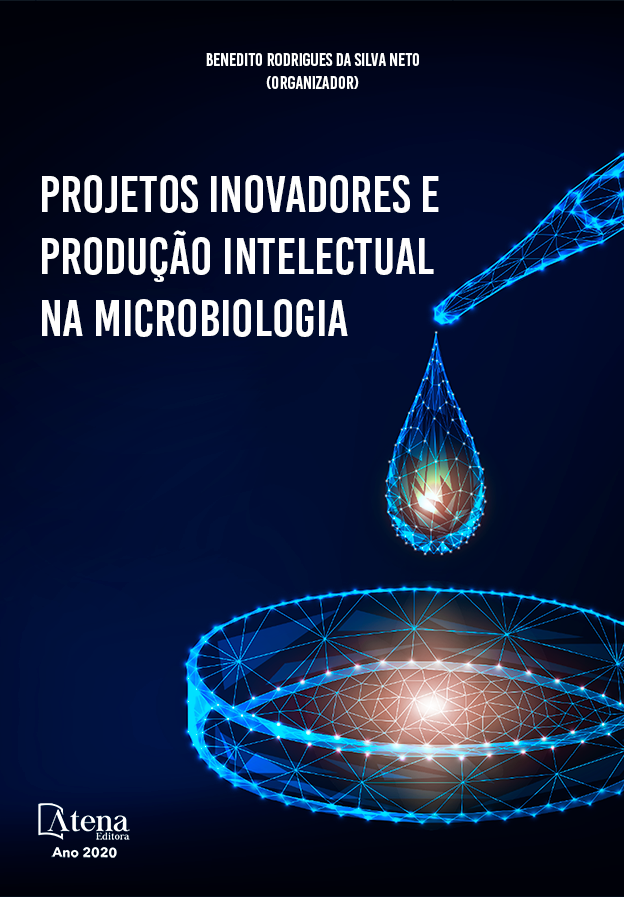
INVESTIGAÇÃO DE FUNGOS PRODUTORES DE ENZIMAS DE INTERESSE BIOTECNOLÓGICO
A utilização de microrganismos como fontes produtoras de enzimas tem se mostrado promissora, pois estes compõem um dos maiores recursos genéticos disponíveis no planeta. Considerando o avanço industrial global crescente e a demanda por fontes de produção de qualidade e baixo custo, a investigação de fungos filamentosos no processo de produção de enzimas se faz necessária e pode contribuir com o desenvolvimento e expansão de produtos biotecnológicos, especialmente na região Amazônica, onde, apesar da sua biodiversidade, ainda tem estes recursos pouco explorados. O presente estudo teve como objetivo investigar a capacidade de fungos filamentosos para a produção de enzimas de interesse industrial e biotecnológico: proteases, amilases, celulases e lipases. Para isto, foram selecionados oito fungos da Coleção de Fungos da Amazônia (CFAM) Fiocruz – AM: CFAM 0027 Aspergillus oryzae, CFAM 234 Aspergillus sp., CFAM 959 A. subolivaceo, CFAM 39 Penicillium janthinellum, CFAM 59 P. fellutanum, CFAM 462 Penicillium sp., CFAM 592 e CFAM 47 P. citrinum. As culturas foram reativadas em meio de cultura Àgar Saboraud (SAB). A obtenção dos extratos enzimáticos foi feita por fermentação submersa durante 7 dias em solução de Manachini suplementado com 0,5% do substrato indutor para cada enzima, sendo: gelatina para protease, amido para amilase, CMC (carboximetil-celulase) para celulase e Tween 80 para lipase. Para os testes enzimáticos, utilizou-se o método de cup-plate. Diante disso, observou-se que todos os microrganismos foram capazes de produzir pelo menos três das enzimas estudadas, enquanto que duas espécies apresentaram atividade para todas as enzimas avaliadas: CFAM 47 P. citrinum e CFAM 59 P. fellutanum. Entre os isolados, 37,5% revelaram resultados positivos para protease, 100% para amilase e lipase, e 87,5% para celulase. Desta forma, os resultados obtidos podem ser considerados promissores, uma vez que demonstram a potencialidade da aplicação biotecnológica de fungos da Amazônia em diferentes setores da indústria.
INVESTIGAÇÃO DE FUNGOS PRODUTORES DE ENZIMAS DE INTERESSE BIOTECNOLÓGICO
-
DOI: 10.22533/at.ed.74720171110
-
Palavras-chave: amilase; celulase; fungos; lipase; protease
-
Keywords: amylase; cellulase; fungi; lipase; protease
-
Abstract:
The use of microorganisms as enzyme-producing sources has shown promise, as they make up one of the largest genetic resources available on the planet. Considering the increasing global industrial advance and the demand for quality and low-cost production sources, the investigation of filamentous fungi in the enzyme production process is necessary and can contribute to the development and expansion of biotechnological products, especially in the Amazon region, where, despite its biodiversity, it still has these little explored resources. The present study aimed to investigate the capacity of filamentous fungi for the production of enzymes of industrial and biotechnological interest: proteases, amylases, cellulases and lipases. For this, eight fungi from the Amazon Fungi Collection (CFAM) Fiocruz - AM were selected: CFAM 0027 Aspergillus oryzae, CFAM 234 Aspergillus sp., CFAM 959 A. subolivaceo, CFAM 39 Penicillium janthinellum, CFAM 59 P. fellutanum, CFAM 462 Penicillium sp., CFAM 592 and CFAM 47 P. citrinum. The cultures were reactivated in Ágar Saboraud (SAB) culture medium. The enzymatic extracts were obtained by submerged fermentation for 7 days in Manachini's solution supplemented with 0.5% of the inducing substrate for each enzyme: gelatin for protease, starch for amylase, CMC (carboxymethyl cellulase) for cellulase and Tween 80 for lipase. For enzymatic tests, the cup-plate method was used. Therefore, it was observed that all microorganisms were able to produce at least three of the studied enzymes, while two species showed activity for all evaluated enzymes: CFAM 47 P. citrinum and CFAM 59 P. fellutanum. Among the isolates, 37.5% showed positive results for protease, 100% for amylase and lipase, and 87.5% for cellulase. In this way, the results obtained can be considered promising, since they demonstrate the potential of biotechnological application of fungi from the Amazon in different sectors of the industry.
-
Número de páginas: 15
- Leidiana Pinto da Costa
- Rafael Cardoso Bastos
- Thayana Souza Cruz
- Layne Even Borges de Souza


